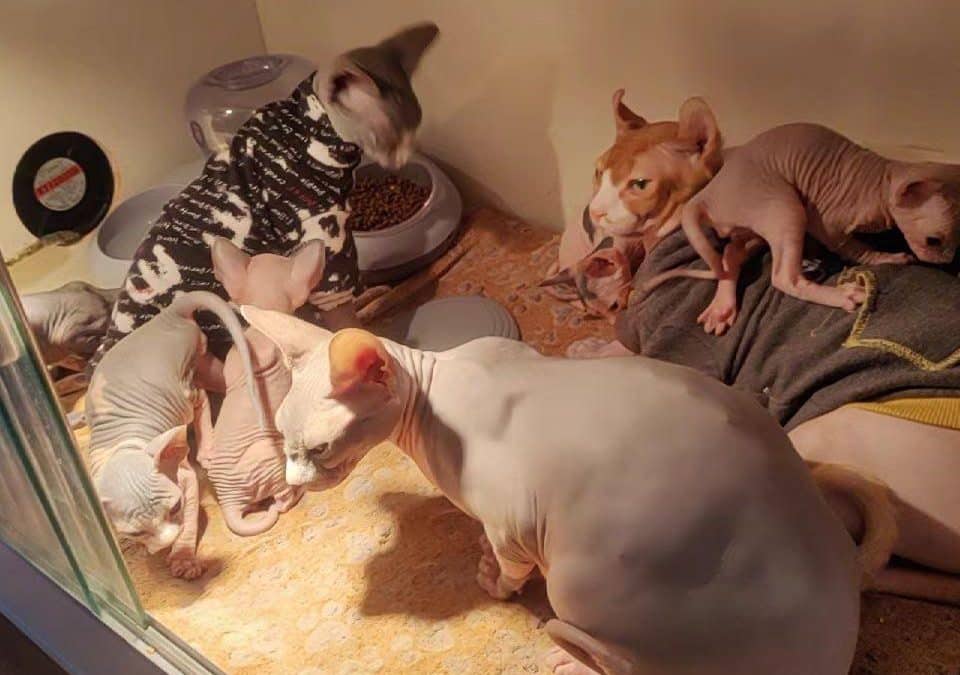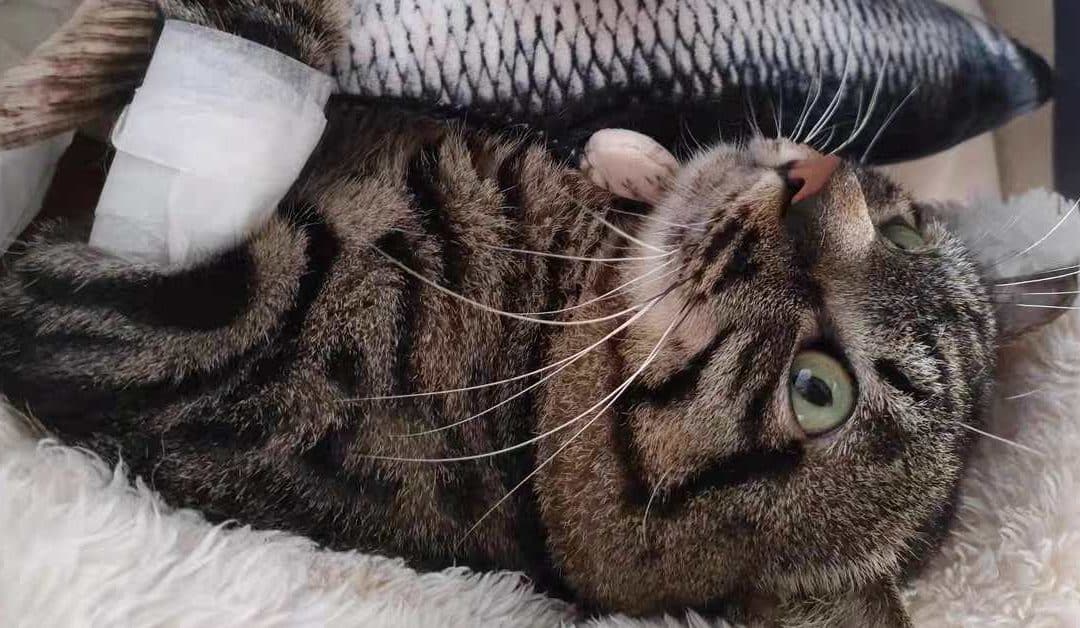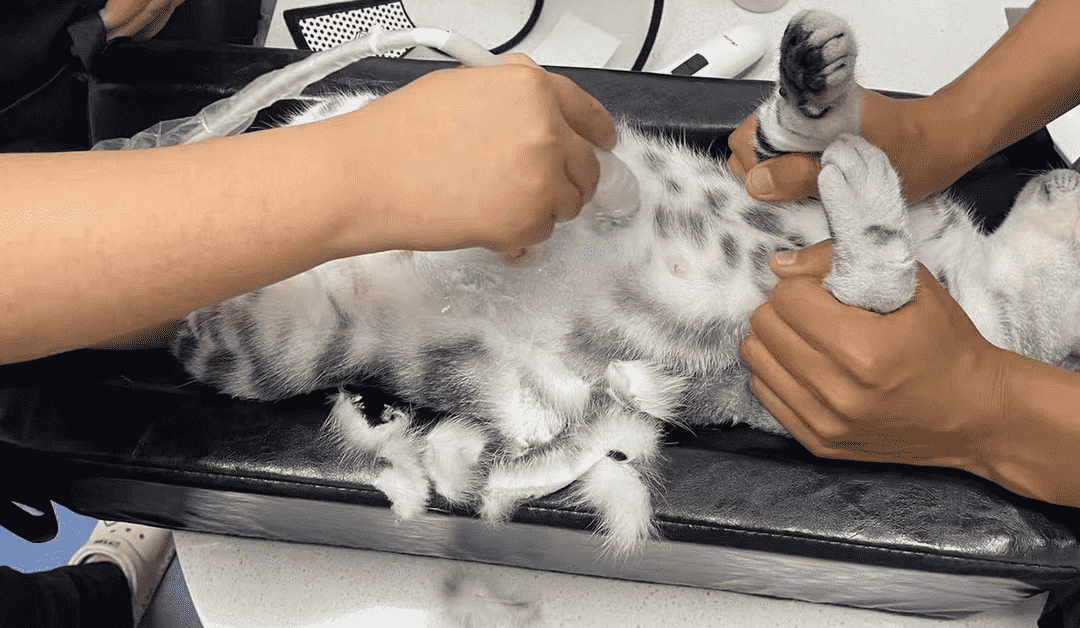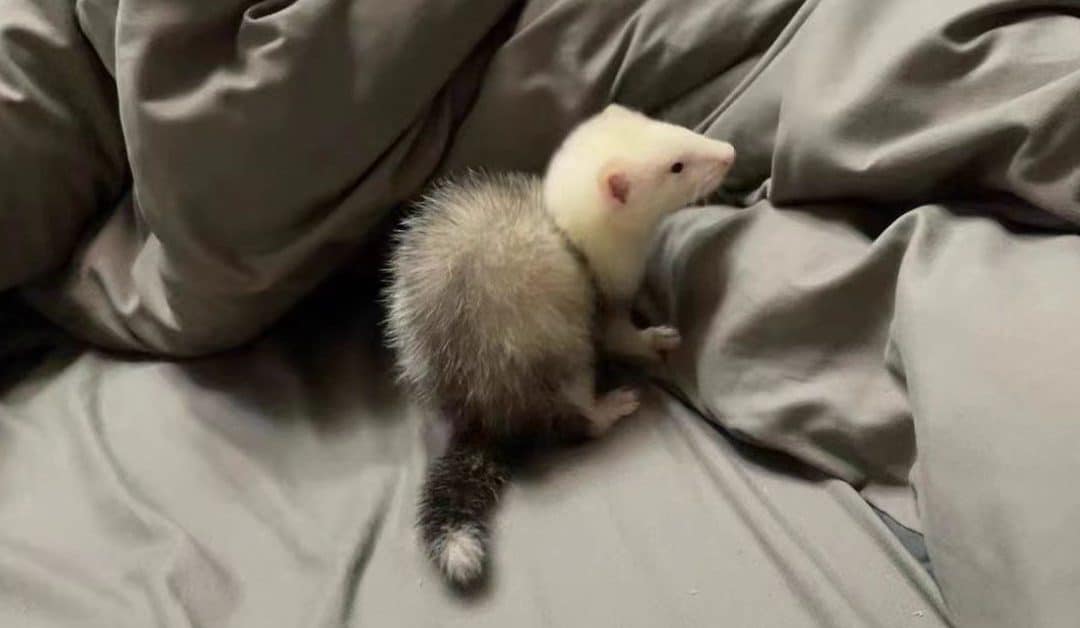
by Dr. Faith Whitehead | Nov 11, 2022 | Pet Story, Research and News
There are many reasons why cats are much loved and considered ideal house pets. One reason is that they are very independent animals. They don’t need to be taken on walks or require a lot of attention like some other pets do. Cats also have a lot of personality and are often very affectionate with their owners. They are also very clean animals and don’t require a lot of grooming. Lastly, cats are relatively low maintenance pets overall which makes them ideal for busy people. Cats have also been shown to have a calming effect on their owners, and can help reduce stress levels. A 2004 study found that 42% of cats surveyed helped their owners feel less lonely, and another study found that cat owners were 30% less likely to die of a heart attack than those who didn’t own a cat. While cats may not be the most affectionate animals, they do form strong bonds with their owners. A study in 2007 found that while cats didn’t show much preference for their owners over strangers, they did form attachments with their owners that were similar to the attachments formed between parents and their young children.
But perhaps the biggest reason people love cats is because they are so cute and lovable. They have adorable faces, and their small size means they can be easily cuddled. Cats also have a reputation for being very clean, and they groom themselves regularly. This means they don’t shed as much as other pets, and they don’t have that “wet dog” smell. First and foremost, cats are good friends for humans. Many cats are lovable. They will cuddle up and want scratches or patted on the skin. A purring cat is impossible to resist. Cats are often fairly playful when they’re not feeling affectionate. They like chasing anything hanging on a thread, including balls, feathers, and other objects. When their owners are playing along, they really like it. Cats are trainable, despite what the general public believes. Like with a dog, a cat may be educated to stop undesirable behavior or perform tricks using incentives and punishments. Even cats will fetch!
Second, cats are well-mannered members of the family. Cats don’t bark or produce other loud sounds as dogs do. The majority of cats seldom ever even meow. They often lead tranquil lives. Additionally, cats seldom have “accidents.” Most cats will utilize the litter box without fail going forward if their mothers teach them to do so. When shown the box, even stray cats often comprehend the idea and will use it frequently. Cat owners must account for the fact that their pets actually have claws. The cat will often be happy to stay off the furniture if there is a tall scratching post in a favorite cat location of the home. Cats may, of course, be declawed as a last resort.
Finally, one of the best qualities of cats as home pets is their simplicity of maintenance. Cats do not need walking. As they play and use the litter box for business, they receive enough of exercise in their home. A litter box may be easily and quickly cleaned. Cats groom themselves on their own as well. Since cats often clean themselves, it is virtually never required to bathe them. Compared to humans, cats are more fastidious about their personal hygiene. Cats are also unafraid of being left home alone for a few hours. Most cats, unlike other pets, won’t wreck the furniture if left alone. They are willing to go on as normal till their owners get back.

by Dr. Faith Whitehead | Nov 11, 2022 | Cat Cancer & Tumors, Pet Story
I remember the day we found out that our cat, Pumpkin, had cancer. It was a warm autumn day and Pumpkin was curled up in her usual spot in the sun. My husband and I were sitting on the couch, talking, when we noticed that Pumpkin seemed to be having trouble breathing. We took her to the vet and they did some tests. The results showed that Pumpkin had a tumor in her chest and the prognosis wasn’t good. We were devastated. Pumpkin was only six years old and we loved her dearly. We decided to give her the best possible life for as long as we could and made sure she had plenty of cuddles, soft beds, and her favorite foods. We were heartbroken when she passed away a few months later, but we cherish the time we had with her.
The pet person’s worst concern is missing the dear friend. For those who have experienced the loss, there is usually a painful story to get about the loved dog or cat’s end. From one animal person to another, we see the extreme pain and hunger that happens after the loss. There is no proper way to grieve and get through the process, as everyone walks down the different journey with the lover. The lover may represent a person, relative, close friend, or long-term friend. Dogs and cats go an average of 13 years—enough time to really participate and sleep in the heart. They turn into a part of the home and everyday life. The morning routine may not be full without playing fetch or getting on the walking with the dog or snuggling with the feline.’
Deciding to put your animal companion to sleep is one of the most difficult decisions you will ever have to make for your pet. As a loving pet owner, though, the time may come when you need to help your pet make the transition from life to death, with the help of your veterinarian, in as painless and peaceful a way as possible. Euthanasia for a beloved pet is highly personal decision and usually comes after a diagnosis of a terminal illness and with the knowledge that the animal is suffering badly. Your choices for your pet should be informed by the care and love you feel for the animal. Important things to consider include: If you do decide that ending the suffering is in your pet’s best interest, take your time to create a process that is as peaceful as possible for you, your pet, and your family. You may want to have a last day at home with the pet in order to say goodbye, or to visit the pet at the animal hospital. You can also choose to be present during your pet’s euthanasia, or to say goodbye beforehand and remain in the veterinary waiting room or at home. This is an individual decision for each member of the family.
Some say they would never foster a lover because it would be too difficult to say goodbye when the creature is adopted, but take this choice. It may take difficult to say good-bye to this creature you’ve attached with, but it’s crucial to think that by opening the house, you are keeping a life— and each pet you foster is a new life saved. You turn into an important part of the organization to keep homeless pets by not just giving the particular animal feeling, but by making the change for all creatures.

by Dr. Faith Whitehead | Nov 11, 2022 | Pet Story, Research and News
Owning exotic creatures as personal pets is an activity that has been controversial for centuries. Some people believe that it is morally wrong to own another living creature as a personal pet, while others believe that it is an expression of our dominance over nature. There is no right or wrong answer to this question, and it is ultimately up to the individual to decide whether or not they believe it is ethical to own an exotic pet. While it is true that some people do not take proper care of their exotic pets, this does not mean that all owners are cruel or abusive. Many people who own exotic animals take excellent care of their pets and provide them with everything they need to be happy and healthy. In addition, exotic pets can pose a danger to the people and other animals around them. These animals may carry diseases that can be harmful to humans or other animals. They may also be aggressive and may attack people or other animals.
Despite exotic creatures being kept as pets, many people believe that owning exotic creatures is cruel and inhumane. These animals are often taken from their natural habitat and forced to live in captivity, where they may be subject to neglect or abuse. In addition, exotic pets may pose a danger to the people and other animals around them. There are many reasons why people choose to own exotic pets. Some people believe that these animals make unique and interesting companions. Others view exotic pets as a status symbol or a way to show off their wealth. Still, others believe that these animals provide them with a sense of security or power. Whatever the reason, it is important to remember that exotic pets are living creatures that deserve to be treated with respect. If you are considering purchasing an exotic pet, be sure to do your research and choose an animal that will be a compatible companion for you and your family.
The art of owning exotic creatures as personal pets is not archaic. There are many modern people who own and care for exotic pets and have done so for many years. Exotic pets can include reptiles, amphibians, mammals, birds, and fish. Modern day exotic pet owners often purchase their pets from breeders, pet stores, or animal sanctuaries. Exotic pet ownership can be a rewarding experience for both owner and pet. However, there are some challenges that come along with owning an exotic pet. Properly caring for an exotic pet requires knowledge and commitment. Exotic pets often have specialized care needs that can be difficult to meet. For example, some reptiles need a warm and humid environment, which can be difficult to maintain in a home. In addition, exotic pets can be expensive to purchase and care for. Exotic pets also may not be legal to own in some areas.
There are both advantages and disadvantages to owning exotic creatures as pets. Some people view exotic pets as unusual and interesting, while others may see them as dangerous or difficult to care for. Some advantages of owning an exotic pet include the potential to bond with a unique animal, the excitement of having a rare pet, and the opportunity to learn about another culture or species. Some disadvantages of owning an exotic pet include the risk of the animal escaping or injuring someone, the high cost of care, and the time and effort required to care for a pet that may have very specific needs.

by Dr. Faith Whitehead | Nov 11, 2022 | Cat Cancer & Tumors, Dog Cancer & Tumors, Food & Health, Medicines & Therapies, Pet Story, Research and News
Euthanasia is the humane process of ending an animal’s life in order to relieve pain and suffering. The decision to euthanize a pet is a difficult one, but sometimes it is the most humane option. If you are considering euthanasia for your pet, it is important to consult with your veterinarian to discuss all of your options and to make sure that you are making the best decision for your pet. Veterinarians may perform euthanasia on pets for a variety of reasons. The most common reason is when a pet is suffering from a terminal illness and the owner does not want the pet to continue to suffer. Other reasons for euthanasia include when a pet is aggressive and poses a danger to others, when a pet is severely injured and cannot be healed, or when an owner can no longer afford to care for the pet.
There are a number of procedures that can be used for euthanasia in pets, and the support given will depend on the individual pet and owner. Some common procedures include injecting a lethal dose of an anesthetic agent, such as euthanasia solution, into the vein or muscle; asphyxiation using carbon dioxide; or administration of a high dose of barbiturates. The owner may be present during the procedure, and the pet will usually be placed on a table or in a quiet room to minimize stress. After the pet is euthanized, the body will be removed and the owner may be given time to say goodbye.
The pros of going forward with euthanasia in pets is that it can provide a peaceful death for a pet that is suffering from a terminal illness or has a poor quality of life. It can also spare the pet’s owner from having to witness the pet’s decline and suffering. The cons of going forward with euthanasia in pets is that it is a permanent solution and can be emotionally devastating for the pet’s owner. Some people may feel that euthanasia is a good idea in certain situations, such as when a pet is suffering from a terminal illness and is in pain, while others may believe that it is never acceptable to end a pet’s life. Ultimately, the decision of whether or not to euthanize a pet is a personal one that should be made by the pet’s owner in consultation with a veterinarian.
There are a few things to keep in mind when considering euthanasia for a pet. First, make sure that you have a good reason for doing so. Euthanasia should only be considered when a pet is suffering from a terminal illness or is in pain that cannot be alleviated. Second, be sure to consult with a veterinarian before making a decision. They will be able to advise you on whether or not euthanasia is the best option for your pet. Finally, be prepared for the emotional fallout that comes with euthanasia. This is a difficult decision to make, and it is important to be prepared for the grief that comes afterwards.

by Dr. Faith Whitehead | Nov 11, 2022 | Pet Story, Research and News
People are rearing pets now more than ever before. Few individuals may be seen walking dogs if you take a stroll through a park or even just walk through the streets. In reality, a lot of locations now accept pets, and several locations have pet cafés available. People want pets for different reasons. Some people want to keep them as loyal friends and companions, some people want to keep them for their beauty, and some people keep them for their unusual and unique traits. People have been keeping pets for a long time. The first known dogs were domesticated over 14,000 years ago. Since then, people have continued to keep all kinds of animals as their own, including dogs, cats, birds, rabbits, hamsters, fish, and more. People are becoming more and more interested in keeping pets. In fact, the pet industry is growing. In the United States, the pet industry is a $72 billion industry. This industry is expected to continue to grow. Some people are choosing to adopt pets from shelters instead of buying them from breeders or pet stores.
In the United States alone, almost 25 million animals are used for experimentation every year. Dogs, cats, bunnies, pigs, lambs, monkeys, and other creatures are among them. They are confined to small cages where they are force-fed chemicals, have holes drilled into their skulls, and suffer other painful procedures. The lucky ones are euthanized when their torment is over. Many others, however, are abandoned and often die because they are ill and have no way to care for themselves. There is no law that requires laboratories to find homes for the animals they no longer need, so the fate of these creatures is often left to the discretion of individual scientists. As a result, many animals used in experiments are simply killed when the research is done. There are a number of animal rights organizations, such as People for the Ethical Treatment of Animals (PETA), that work to expose the cruelty of animal testing and lobby for stricter regulations. These groups also provide support to scientists who want to find alternatives to using animals in their research.
Animal experimentation is sometimes referred to as “animal testing,” “animal experimentation,” and “animal research.” It is used to evaluate a product’s safety and effectiveness as well as to comprehend how the human body functions. There are three types of animal experiments: In-vitro experiments are conducted using cells or tissues that have been removed from the body. In-vivo experiments are conducted using living animals. In silico experiments are conducted using computer models. Animal experimentation is considered to be a necessary evil by some people while others believe that it is an inhumane and cruel practice. The debate surrounding the ethics of animal experimentation is complex and often emotional. Those who support animal experimentation do so for a variety of reasons. They argue that animal experimentation is necessary for the advancement of medical science and that it has led to the development of lifesaving treatments and vaccines. They also argue that the animals used in experiments are well cared for and that their rights are protected by law. Those who oppose animal experimentation do so for a variety of reasons. They argue that it is cruel and inhumane to use animals for experimentation. They also argue that there are alternative methods of research that do not involve the use of animals.
The testing industry often subjects animals to tests that are on the verge of becoming torture. Animals are often bred particularly to be experimented on. The tests performed on animals are often painful and sometimes deadly. Animals experience fear and suffering during experiments. Animals are not able to give consent to be experimented on. Test subjects may be forced to become addicted to drugs, or be exposed to HIV or other deadly diseases. In addition to the ethical problems associated with animal testing, there are also scientific problems. Animals react differently to drugs and other substances than humans do. This means that the results of animal testing may not be accurate when applied to humans.
About the author: Dr. Faith Whitehead; is a licensed veterinarian and researcher.

by Dr. Faith Whitehead | Nov 11, 2022 | Pet Story, Research and News
Pets are the best friends for children. They love children and enjoy their company. Pets provide children with companionship, love and security. They teach children how to love and care for others. Children who have pets are more likely to be happy and have higher self-esteem. They are also less likely to suffer from anxiety and depression. Some of the advantages of children connection to pets essay are that they help children develop empathy, they can provide companionship, they can help children learn responsibility, and they can help children feel loved and secure. Pets can help children develop empathy by teaching them to care for another living creature. Pets can provide companionship by being a constant friend to a child. Pets can help children learn responsibility by teaching them to care for another living creature. Pets can help children feel loved and secure by providing them with a loyal and loving companion.
The relationship between children and pets is a long and varied one. Pets provide company and absolute love for children, who in turn often provide care and attention for their furry (or sometimes scaly) friends. This symbiotic relationship can offer many benefits for both parties, including increased physical activity, decreased loneliness and anxiety, and improved social skills. Pets can also teach children about the cycle of life and how to deal with the death of a loved one. They can also inspire empathy and responsibility in children, who must learn to take care of their pets in order to keep them healthy and happy. There are, of course, some risks associated with keeping pets, including the potential for bites or scratches, allergies, and the spread of disease. However, these risks can be minimized by choosing the right pet for your family and teaching children how to safely interact with their new furry (or scaly) friend.
Many people believe that the idea of exposing children to pets is a controversial one. Some people believe that it is beneficial for children to be exposed to pets, as it can teach them responsibility, empathy, and other important life skills. Others believe that pets can be dangerous for children, and that children should not be left alone with them. Ultimately, the decision of whether or not to expose children to pets is a personal one. Some children may form strong bonds with their pets and view them as part of their social circle, while others may not be as attached and view them more as property. Ultimately, it is up to the individual child and how they choose to interact with their pet that will determine if and how their social life is affected. For some children, having a pet can provide them with a sense of companionship and responsibility. These children may feel more comfortable socializing with other children who also have pets, as they have something in common to bond over. For other children, having a pet may foster a sense of independence, as they learn to care for another living creature. These children may be more likely to engage in activities on their own, such as exploring the outdoors, and may not feel the need to be around others as often.
About the author: Dr. Faith Whitehead; is a licensed veterinarian and researcher.






